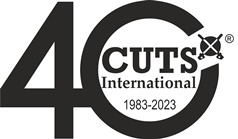Published: The Hindu Business Line, May 19, 2008
By Siddhartha Mitra
With a car for every 15 people India’s ten or so “four-million plus” cities seem to have less of a congestion problem than their counterparts in the US, with a car for every two people. If statistics can lie, these certainly do — the much higher population density in India’s large cities implies that people and their cars are confined to much smaller spaces; two-wheelers and three-wheelers also contribute largely to congestion, outnumbering cars three to one.
Rapid economic growth implies that each city’s car fleet doubles every five years or so; at the same time, entrants to the middle-class can be expected to use their new found purchasing power to shift from the dysfunctional public transport system to two-wheelers. Already, in cities such as Bangalore and Mumbai, traffic moves at less than jogging pace. The future seems to hold much greater problems; the very economic growth that put so many wheels in motion might be paralysed as these wheels grind to a near halt.
Let us look at the genesis of the problem. Economic liberalisation and the rapid growth it generated led to many automobile producers entering the market — the variety and number of cars increased but these competed for almost the same road space as before.
Poor public transport
At the same time, our public transport system — buses, trams, local trains, etc — did not evolve to meet the rising aspirations of the people and, in many cases, deteriorated beyond measure in terms of comfort and punctuality as they were either run by leaky government transport companies or were operated on the basis of competitive principles that lacked sustainability.
The upshot of all this was that as soon as people had the capacity to pay for or borrow for private vehicles, they made use of it. Moreover, once these vehicles were bought, they became the sole means of mobility, unlike European and even some American cities, where own-vehicle use is limited almost completely to moving outside the city as public transport provides more efficient and cheaper inner-city mobility.
The problem in the Indian case is two-fold — unfettered competition among automobile producers in providing transport services to the population and no effective competition between private and public transport.
These twin problems, by leading to crowded streets, social tensions, road rage and delays at work, get translated into GDP losses, high levels of pollution, higher incidence of respiratory diseases and loss in productivity of the workforce. There is much to gain in terms of welfare if these twin problems can be resolved, including saving on crude oil imports, which get costlier by the month.
Recent regulation of the transport sector in various countries falls in two categories — direct and indirect. Direct measures try to limit the number or types of automobiles owned. For example, in Singapore, a limit is placed on the number of new cars allowed to register in a year. While these measures are ideal for prevention of congestion within a city, they leave people without options when it comes to travelling outside the city.
Indirect measures, on the other hand, are more discerning in their impact. These relate to the use of low speed limits, congestion charges and high parking fees within city limits.
Indirect measures
Such measures, popular all over the EU, curb pollution and reduce delays resulting from congestion. People are encouraged to use public transport within the city.
In India, we have started experimenting with light indirect measures, such as nominal parking fees in most big cities. However, in most cases, parking fees, which range between Rs 5 and Rs 20 an hour, are too low to deter travel by car. A case can be made for hiking these parking charges and introducing congestion charges in inner city areas. However, any disincentives to use private transport have to be accompanied by improvements in public transport, which make the latter a viable alternative to the former. At present, urban bus transport systems are a mess and intra-city train facilities exist only in four Indian cities — New Delhi, Kolkata, Chennai and Mumbai. Privatisation of bus systems is a must for plugging the leakages that characterise urban bus transport.
However, Delhi’s sorry experience with Blue Line buses implies that unsavoury competition among private bus operators has to be kept on a leash – regulated tariffs to ensure affordability and area-wise bidding for licences to operate bus services, accompanied by periodic assessment of performance constitute essential ingredients of a sound public transport policy.
Unless the government ensures that public transportation emerges as a viable alternative to private transport, a descent into a quagmire of chaos, congestion and stagnation is imminent. The time has come to act, and swiftly.
Mr Mehta is Secretary General, CUTS International, and Mr Singh is Fellow, CUTS Centre for Competition, Investment and Economic Regulation and can be reached at psm@cuts.org
(The author is Director (Research), CUTS International, a research, advocacy and networking group and can be reached at sm2@cuts.org)
This article can also be viewed at URL:
http://www.thehindubusinessline.com/2008/06/03/stories/2008060350160800.htm
